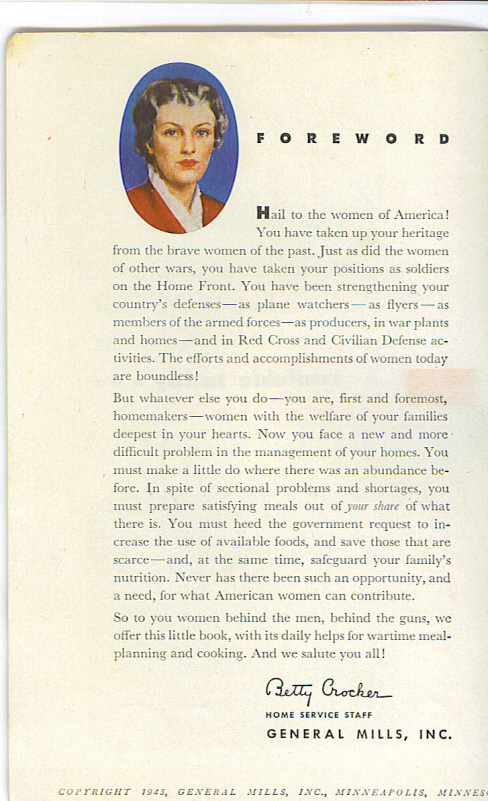Enough to go around
by Carl Zebrowski
There were lines at the grocery store, the butcher shop, and the gas station. Shoppers carried booklets of government-issued stamps that were required if they wanted to buy certain goods. It was rationing, with the government deciding who could buy what. It reeked of communism, and it was right here in the United States. And it wasn’t all bad.
As the military moved overseas to fight the war, it needed clothing, equipment, vehicles, weapons, and food. But the people at home needed supplies, too. The government stepped in to make sure both would have enough. The goal was to control the availability of certain essential goods and keep the prices reasonable. Shoes, appliances, razor blades, tires, heating oil, butter, cigarettes, beef, gasoline, and coffee were among the affected items.
The responsibility for running the ambitious and controversial rationing program fell to the Office of Price Administration. The first target was tires, as the Japanese gobbled up the rubber-producing islands of the Pacific. It was up to the OPA to figure out which citizens needed tires most. Those whom the OPA decided absolutely needed to drive were given a certificate right away that allowed them to buy a new set of tires. The list of the privileged included doctors, public officials, and war workers. It did not include ministers, an omission that raised a public outcry, especially from the rural South. President Franklin Roosevelt “was outraged that anyone could be so casual about both fundamentalist religion and the fundamentals of American politics,†remembered OPA administrator John Kenneth Galbraith. “Ministers were promptly proclaimed essential.â€
Eventually, the OPA realized the best way to conserve rubber was to cut down on driving. The mainstay of that effort was gasoline rationing. Again, the government determined who most needed to drive and then issued different grades of ration stickers. In the beginning, the lowest-level sticker entitled the holder to three gallons of gas a week, which was good for only about 60 miles of driving. That basic sticker quickly became a sign of low standing in the community, leading socially conscious citizens to petition for upgrades. The OPA estimated that eventually half of all drivers had better-than-basic stickers, even though a Gallup Poll determined that three-fourths of Americans who drove to work could have found other transportation.
Food rationing soon followed. In early May, representatives of each household had to visit their local schools, where teachers handed out ration books. The so-called “sugar book†contained stamps that could each be used for a specific product. “You needed a coupon to buy sugar,†reported Gordon L. Cornell of Broadalbin, New York, “but the fact that you had a coupon did in no way guarantee that you could find some!†To check out at the grocery store, a shopper handed over perhaps a sugar stamp, a butter stamp, and any other required stamps along with cash.
The second ration book the government issued, and future books, worked differently. It came filled with different-colored stamps with different point values. Red stamps were for meats, hard cheese, and fats, and blue stamps were for canned and bottled fruits and vegetables. Each person received 16 points in red stamps and 48 points in blue stamps per week. At the store, a shopper found a number displayed on the shelf below an item that told how many ration points the item cost. At checkout, the grocer would tally the cost in ration points and in dollars, and the shopper would hand over the total stamp and cash amounts owed.
The system was a big headache for the grocer. He had to take all the stamps he collected and stick them onto the pages of empty stamp booklets supplied to him by the government. He then took those filled booklets to his distributor, and the amount he was allowed to buy was based on how many stamp books he turned in. Perhaps the biggest trouble for grocers was having to keep up with the continually changing point values that the government assigned to various products.
For families with kids, shoe rationing may have presented the greatest challenge. “My dad had a couple of brothers who were married but didn’t have any children, so he would always collect coupons from them so they could get me a pair of shoes,†remembered Tom Reese, a childhood resident of Washington, DC.
Rationing was far from perfect. Sellers and buyers alike were often frustrated by the complicated regulations. Some turned to the black market. The government, for its part, had problems with enforcement. But in the end, statistics show that the average American ate better during the war than ever before. The little bit of borrowed communism had something to do with that. ...............................................................
Carl Zebrowski is the managing editor of America in WWII. This article originally appeared in the June 2006 issue of America in WWII.
http://www.americainwwii.com/stories/enoughtogoaround.htm
